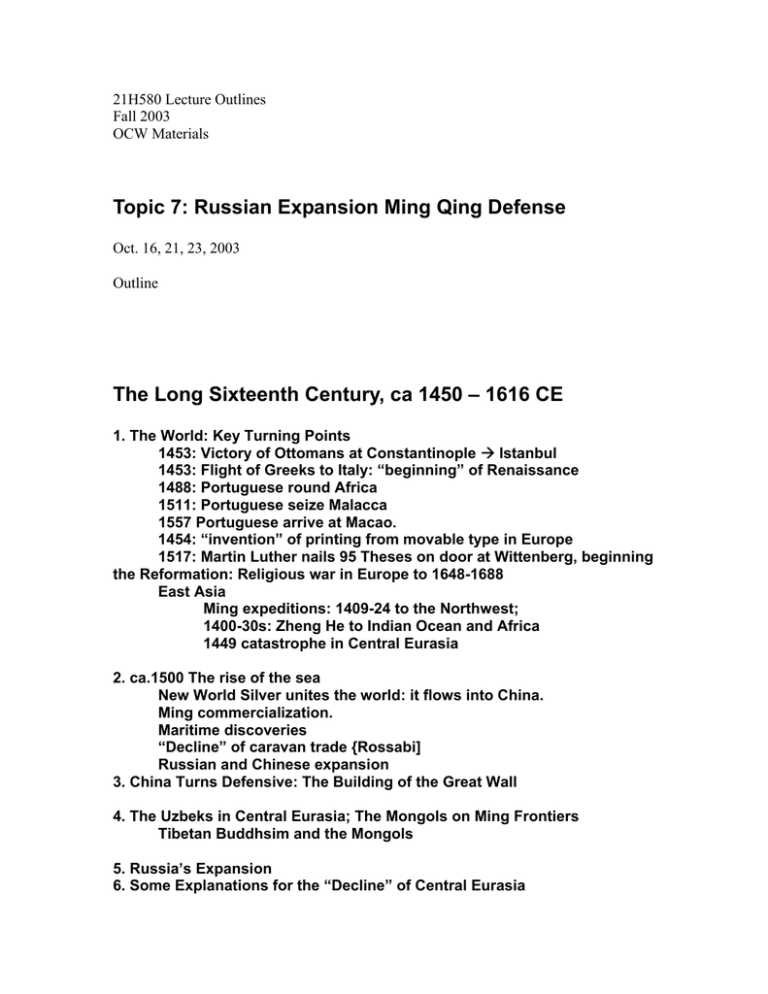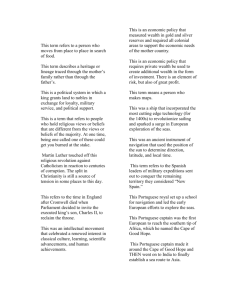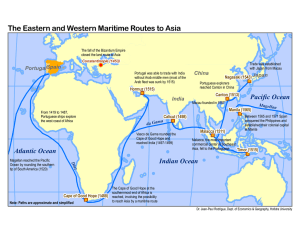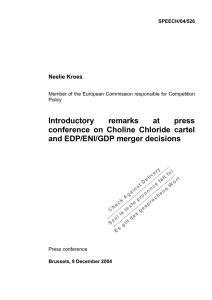Topic 7: Russian Expansion Ming Qing Defense
advertisement

21H580 Lecture Outlines
Fall 2003
OCW Materials
Topic 7: Russian Expansion Ming Qing Defense
Oct. 16, 21, 23, 2003
Outline
The Long Sixteenth Century, ca 1450 – 1616 CE
1. The World: Key Turning Points
1453: Victory of Ottomans at Constantinople Æ Istanbul
1453: Flight of Greeks to Italy: “beginning” of Renaissance
1488: Portuguese round Africa
1511: Portuguese seize Malacca
1557 Portuguese arrive at Macao.
1454: “invention” of printing from movable type in Europe
1517: Martin Luther nails 95 Theses on door at Wittenberg, beginning
the Reformation: Religious war in Europe to 1648-1688
East Asia
Ming expeditions: 1409-24 to the Northwest;
1400-30s: Zheng He to Indian Ocean and Africa
1449 catastrophe in Central Eurasia
2. ca.1500 The rise of the sea
New World Silver unites the world: it flows into China.
Ming commercialization.
Maritime discoveries
“Decline” of caravan trade {Rossabi]
Russian and Chinese expansion
3. China Turns Defensive: The Building of the Great Wall
4. The Uzbeks in Central Eurasia; The Mongols on Ming Frontiers
Tibetan Buddhsim and the Mongols
5. Russia’s Expansion
6. Some Explanations for the “Decline” of Central Eurasia
Maritime trade replaces caravans?
Gunpowder?
Better: the aftermath of Chinggis Khan: Agrarian empire led by
settled nomads close up the frontier.
Portuguese Exploration
From Encyclopedia of World History
PORTUGAL began a major program of oceanic exploration and trade under
the leadership of PRINCE HENRY THE NAVIGATOR (1394-1460).
1418-19
Exploration of Madeira Islands.
1427-31
Definitive discovery of Azores by Diogo de Sevilla.
1433
After ten-year effort, Portuguese ships rounded Cape Bojador; increased
slave raiding.
1444
Nuño Tristam reached Senegal River.
1445
Dinís Dias rounded Cape Verde; increased trade, Portugal-West Africa.
1455-57
Alvise da Cadamosto, Venetian serving Prince Henry, explored Senegal
and Gambia Rivers, discovered Cape Verde Islands.
1470-71
João de Santarem and Pedro Escolar reached Mina on Gold Coast, set up
Portugese trading station (fort, 1482).
1472
Expeditions passed equator; Fernando Po discovered island that bears his
name.
1482-84
Diogo Cão reached Congo River.
1487
Portuguese King John sent overland expedition (Pedro da Covilhã) to India
and east coast of Africa.
Portuguese ships gradually moved along the African coast, with
Bartolomeu Dias reaching the Cape of Good Hope in 1487 and VASCO DA
GAMA sailing around Africa and entering the Indian Ocean in 1497. PEDRO
CABRAL touched Brazil en route to India (1500); regular Portuguese trade
to India began. Da Gama attempted to close the Red Sea to Arab trade
(1501). Almeida defeated Muslim Indian Ocean fleet (1509). Within the next
half century, Portuguese commercial and military bases were established
throughout the Indian Ocean basin and in the South China Sea, in Goa
(1510; governorship of Alfonso de Albuquerque), in Malacca (1511), and in
Macao by 1557. Jorge Alvarez first reached China in 1513. In 1542 Antonio
de Mota first reached Japan, after being blown off course.
From Seventeenth Century Crisis to the Dappled Sunshine of the
Eighteenth Century
1. Seventeenth Century World Crisis, Eighteenth Century Expansion
a. English Civil War 1640-60 Æ Glorious Revolution 1688 Æ 18th
century Stability and Empire
b. France: Religious wars Æ 1688 Settlement; Louis XIV, imperial
expansion
c. Germany: Thirty Years War 1618-48 Æ Rise of Prussia
d. Russia: Time of Troubles 1603-1618 Æ Muscovy Æ Russian
Empire
i. Peter the Great [r.1689-1725]
ii. Catherine the Great [1762-1796]: conversations with
Voltaire, extension of serfdom, ruthless repression of
revolt
e. China: Ming-Qing transition [1600-77] – Flourishing Age of
Kangxi and Qianlong
2. The Losers[?]: Qing Expansion and the Mongolia-Xinjiang-Tibet
a. Yongzheng’s Fiasco and Achievements: Tibet and Mongolia
[1722-1735]
b. Truce on the Frontier 1745-55
c. Qianlong’s Final Blows: 1755-1760
d. The “Return” of the Torghuts
e. Consequences: Population settlement; Commercial
integration; Diversities of Imperial Rule; The creation of
multiethnic Xinjiang
f. Hidden tensions of the Flourishing Age: population pressure,
mobility, frontier instability.
g. Classifications of Peoples: Ethnographies, Maps
3. New Arrivals in the East: Trading Companies, Explorers, and Spies
a. Dutch VOC
British EIC




